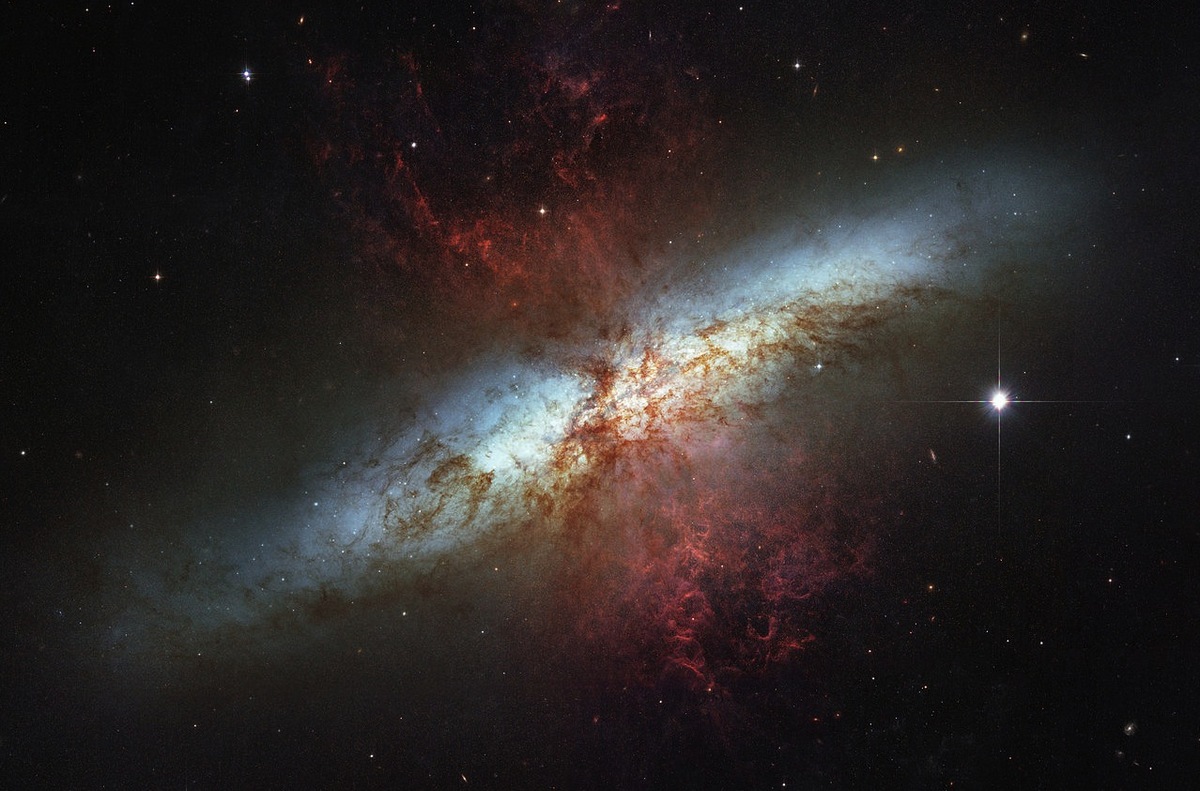Letting off steam: Gas discharge terminates galaxy’s star formation

Messier 82, captured in this Hubble Space Telescope image, is a compact starburst galaxy. Observations of a similar, more distant galaxy have helped reveal a previously unseen aspect of galactic evolution and star formation.
Image: NASA/Hubble Space Telescope Science Institute
With the help of a radio telescope in the French Alps, an international team of astronomers, including two from the University of Wisconsin–Madison, has observed a never-before-seen stage of galactic evolution.
Writing in this week’s Nature, a group that includes UW–Madison astronomers Aleks Diamond-Stanic and Christy Tremonti, reports measurements of dense, cold hydrogen gas being blasted from a distant star-forming galaxy, the first direct observation of the “blow out” phase of a galaxy’s evolution.
The poetically named SDSS J0905+57, a compact “starburst” galaxy roughly 6 billion light years from Earth, was observed using the Institute of Millimeter Radio Astronomy’s Plateau de Bure Interferometer, a radio telescope poised high in the Alps. The observations, made by a team led by James Geach of the University of Hertfordshire in the United Kingdom, show relatively cold molecular gas from the center of the galaxy being ejected to distances of tens of thousands of light years and at speeds up to 2 million miles per hour by pressure exerted from rapidly forming stars at the center of the galaxy.
“This will prevent the next generation of stars from forming and helps explain why there are fewer stars than would be anticipated in a galaxy like this.”
Aleks Diamond-Stanic
Astronomers have long observed streams of warm, ionized gas flowing from galaxies. Seeing an outgoing flow of colder, denser gas, according to Diamond-Stanic, was a surprise and helps scientists better understand the dynamics of star formation and galactic evolution as it is clouds of colder, denser gas that are most likely to collapse and form new stars.
The group, which also included former UW–Madison astronomer Paul Sell, now at Texas Tech University, observed that about a third of the gas from a large cloud within the galaxy is being pushed out by the burst of star formation at the galaxy’s core. As a Wisconsin graduate student, Sell demonstrated that stars are capable of ejecting gas at high velocities.
The new observations are important for two reasons: First, they show a mechanism galaxies use to shut down star formation by removing the gas used to make new stars, a key insight into how galaxies regulate the growth of stars. Second, the observations undermine the idea that a supermassive black hole at the core of the galaxy is required to drive the violent outflow of cold, dense hydrogen from the core of the galaxy. Instead, the results suggest that intense radiation from the mass of stars forming at the core of the galaxy is enough of a feedback mechanism to channel the raw material for nearly a billion suns into a galactic wind that effectively purges a galaxy of the stuff it needs to make new stars.
“This is something that has never been seen before,” explains Diamond-Stanic, a Grainger postdoctoral fellow in UW–Madison’s Department of Astronomy. “This will prevent the next generation of stars from forming and helps explain why there are fewer stars than would be anticipated in a galaxy like this.”
Tags: research, space & astronomy




